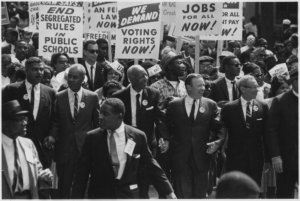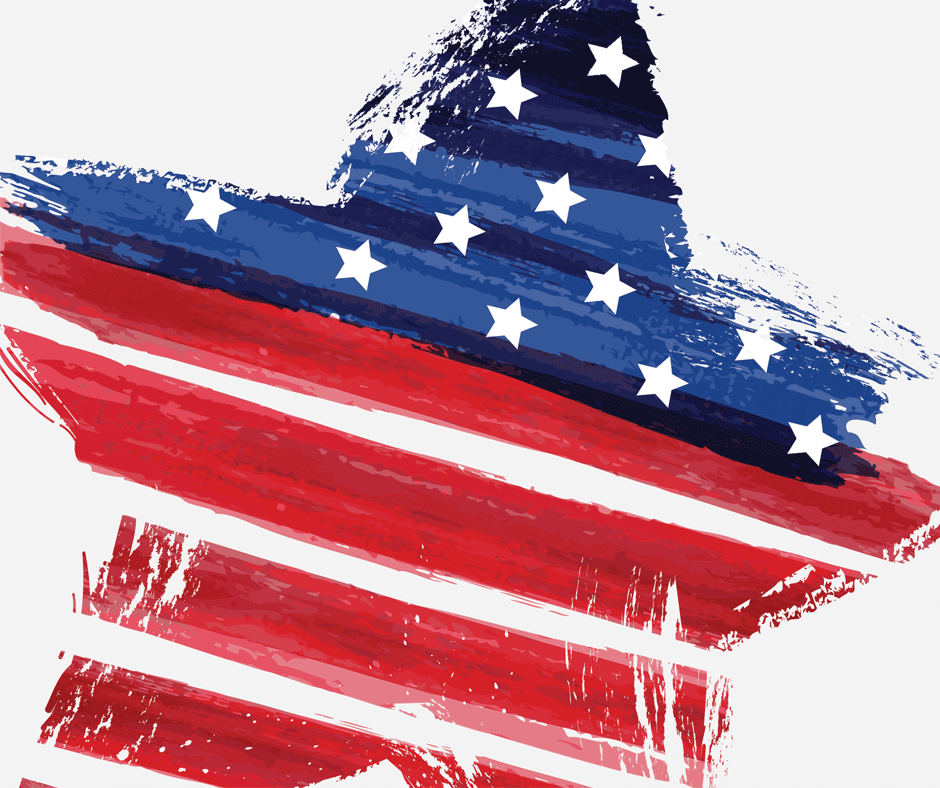August 28, 1963 was 59 years ago.
However, as we watch the news and look out our windows at untold thousands filling the streets, arm-in-arm for racial justice, that date and the famous March on Washington that it commemorates, feels like yesterday, or maybe even tomorrow.
It’s easy to look at the black-and-white footage from that day, seeing younger versions of John Lewis, Martin Luther King, Jr.,Daisy Bates, and mistake it for ancient history. It’s easy to forget what America truly looked like on that day for millions of its citizens.
 In 1963, it was still normal to disenfranchise Black people looking to have their voices heard at the ballot box. Through poll taxes, literacy tests and basic intimidation, the voices of Black America were routinely suppressed and undercounted at the local, state and federal level.
In 1963, it was still normal to disenfranchise Black people looking to have their voices heard at the ballot box. Through poll taxes, literacy tests and basic intimidation, the voices of Black America were routinely suppressed and undercounted at the local, state and federal level.
In 1963, a woman could be denied service at a bar; a lesbian could be fired if her sexuality was revealed; a Sikh man could be turned away at the local store — all within legal bounds. In 1963, Whites-Only spaces were still legal.
This is the year Michael Jordan was born. This is the year “Doctor Who” premiered.
So what happened in 1963 to cause the nation to reflect upon its nature?
There is certainly no one thing that sparked the flame. What we understand as “The Civil Rights Movement” — the series of local demonstrations by thousands of unknown activists to verify the promise of the constitutional amendments passed in the wake of the Civil War, was already decades old in the 1960s. We’d already seen (some) women gain the right to vote and the legal inclusion of Black people as citizens, though not yet equipped with all their unalienable rights.
It may not have been one thing, but there was one moment that is often cited as the tipping point in our nation’s journey to a more inclusive and representative democracy — the 1963 March on Washington for Jobs and Freedom. Though decades in the making (first conceived as a 1940 event led by A. Phillip Randolph), the March is now known for Martin Luther King’s “I Have a Dream” speech which imagined an America where race mattered very little. Over a quarter of a million people filled Washington, D.C., standing shoulder-to-shoulder in the heat to witness a roster of speakers and singers, all aiming to make their country live up to its own reverie of being “the land of free and the home of the brave” in the shadow of the Lincoln Memorial.
However, the reality undergirding King’s dream was, if not less idealistic, more pragmatic. It focused on immediate, concrete issues — eliminating discriminatory voting policies, legal segregation and lawful discriminatory laws that left millions looking IN at the American dream without real access.
The results? One year later saw the Civil Rights Act, which immediately concerned itself with women, racial minorities and those with disabilities but as recently as this year saw its arms expand to protect transgender people and those within the LGBTQ spectrum from job discrimination.
A year later, the Voting Rights Act was signed into law, eliminating decades of racist electoral disenfranchisement and ushering in 250,000 new registered Black Americans who could now successfully exercise their right to vote.
Like the Civil Rights Movement, this current rise in collective consciousness marked by the centering of the Black Lives Matter movement begins with average citizens bent on making a change. As nonprofits, you are uniquely structured to be closer to the source of American transformative power, but are trusted to channel that passion into the change communities everywhere want to hear.
Nonprofits are platforms on which communities empower themselves. Empowering yourself means making your voice heard at the polls and as nonprofits, we CAN make an impact. Our own studies show that voters who are contacted by nonprofits are TWICE as likely to be young, a person of color and female — much like those we see marching in the streets now. These same voters were 11% points MORE likely to vote than those NOT contacted by nonprofits.
For many, making history is to do some singular act never before seen like landing on the moon or discovering new land. But for nonprofits, sometimes making history is the act of REMEMBERING history and what it takes to keep bending the arc of moral justice toward freedom.




